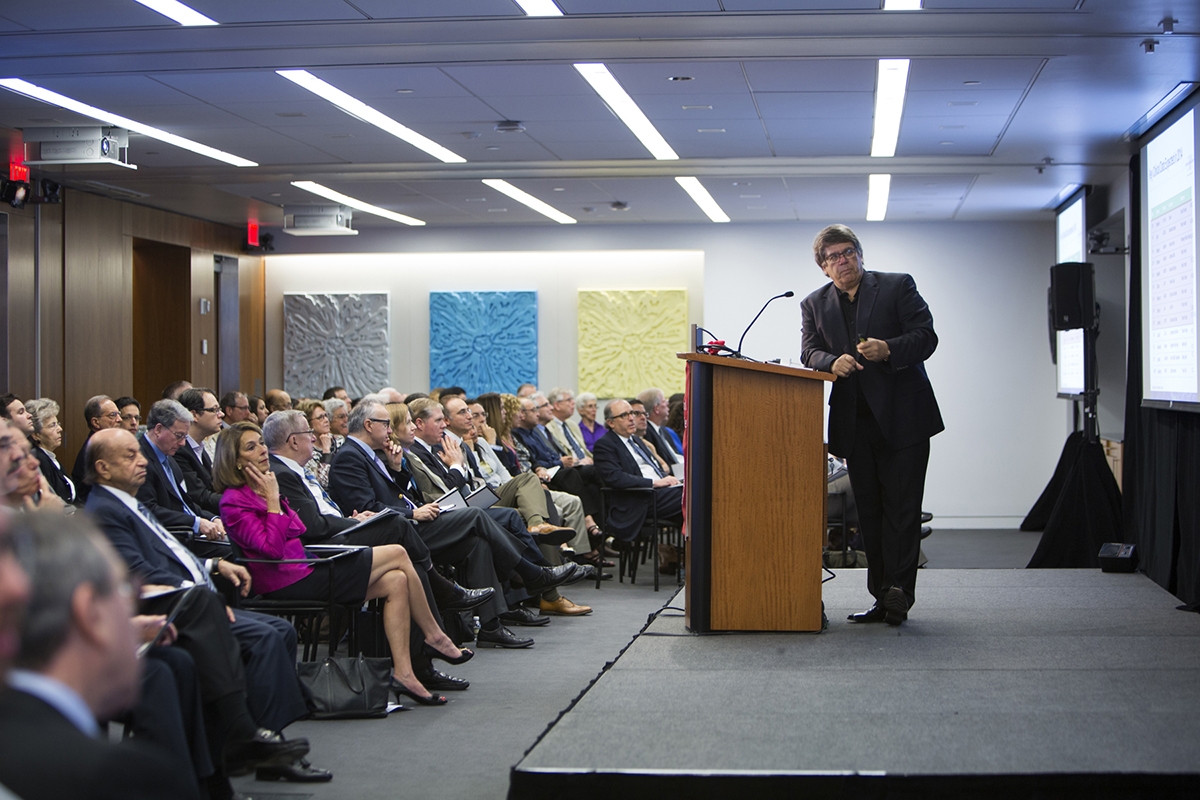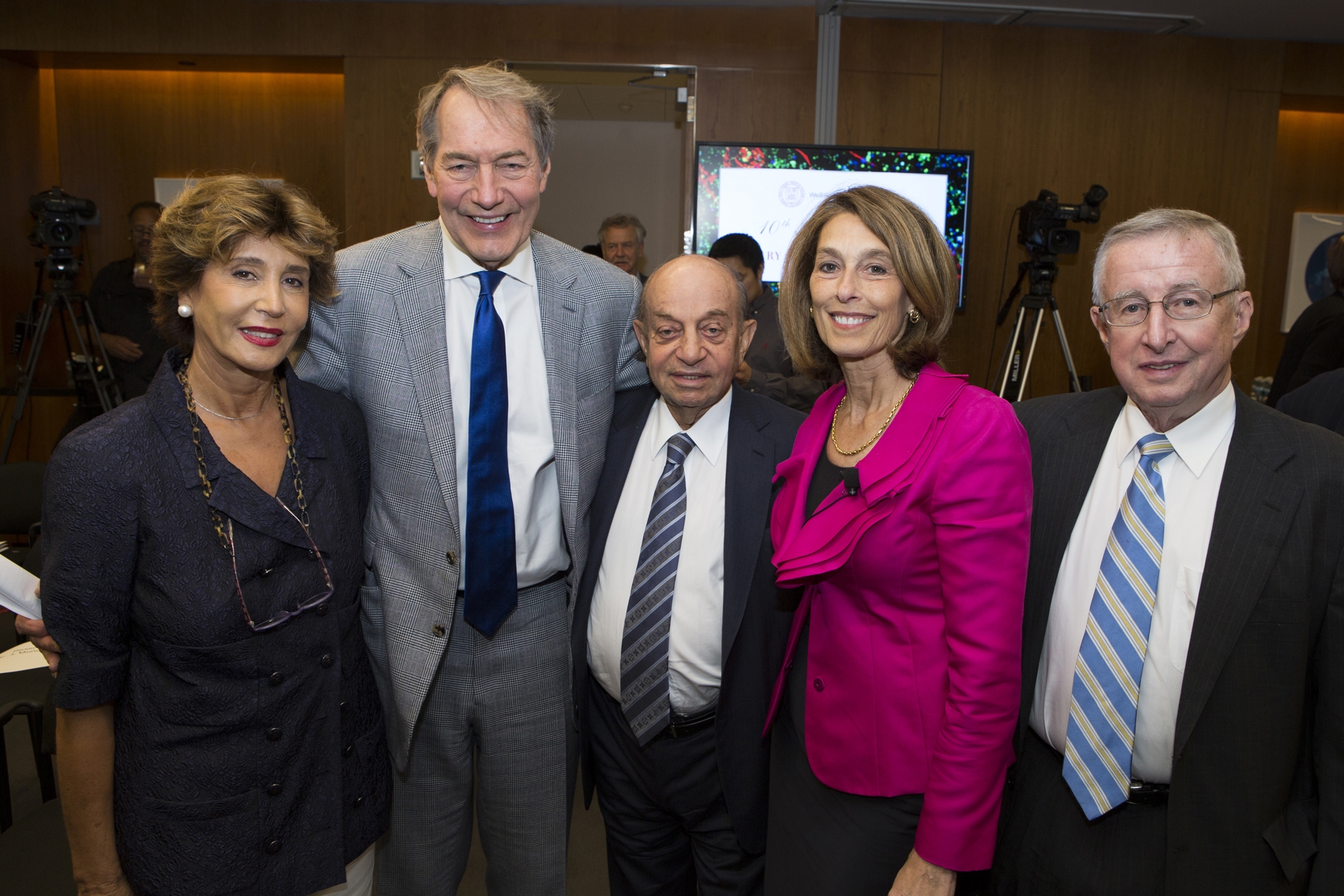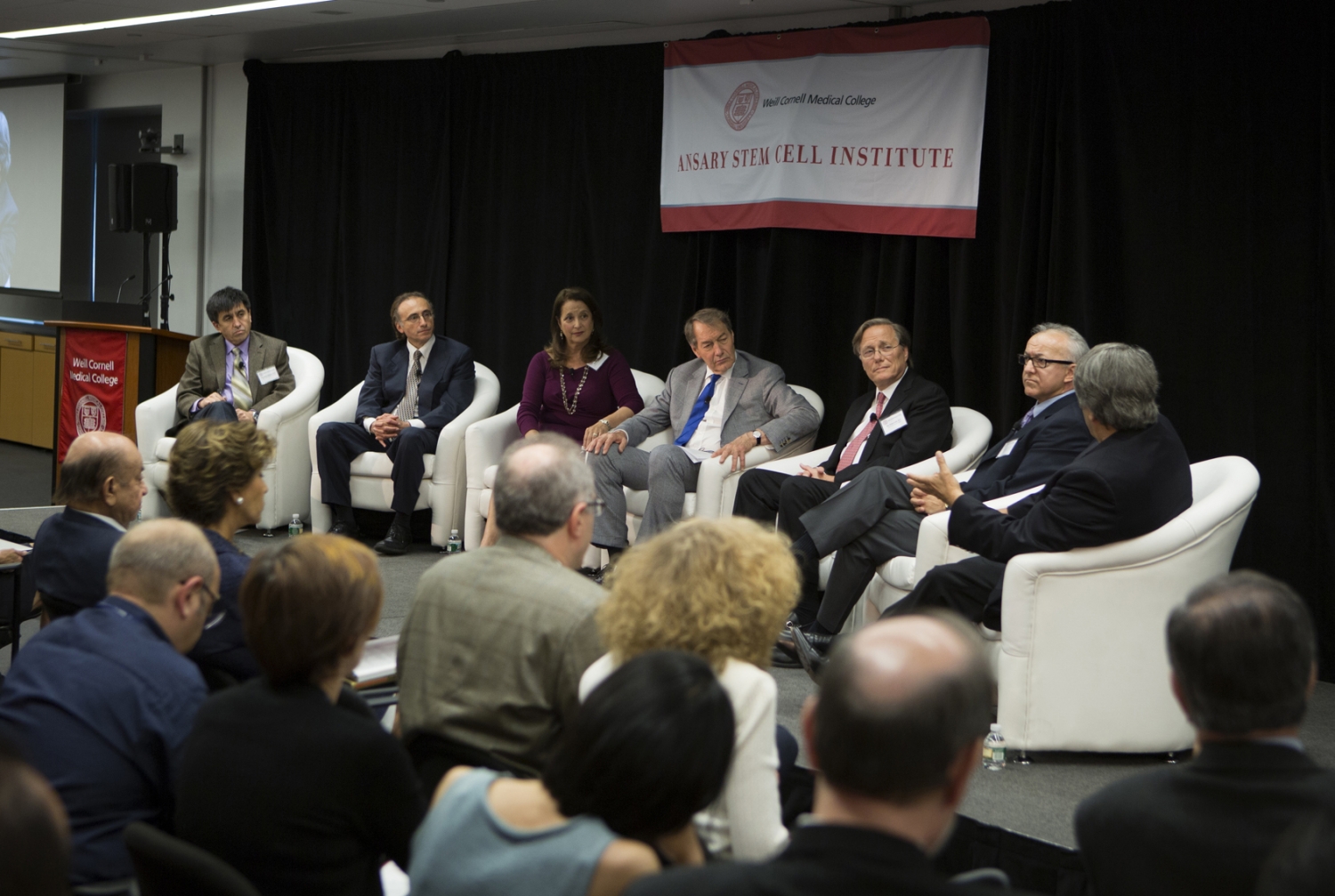Stem-cell science is one of the most promising areas of biomedical research with the potential to dramatically improve treatment of the most intractable diseases, but it will likely take several more years to fully realize its potential.
That was the message at the annual Ansary Symposium on Stem Cell Research on June 6. The day-long event, which marked the 10th anniversary of the creation of the Ansary Stem Cell Institute at Weill Cornell Medical College, assembled the country's leading stem-cell investigators to discuss the field's achievements, its challenges and future.
"The potential for stem cells is tremendous: If someone has a heart attack and major scar tissue, we can use stem cells to regenerate the heart," said Dr. Shahin Rafii, director of the Ansary Stem Cell Institute and professor of genetic medicine, medicine and reproductive medicine at Weill Cornell. "The challenge is to figure out how to get stem cells to make a functional, safe heart muscle. Stem cells can be used for a wide range of problems, including heart degeneration, Alzheimer's, diabetes and even targeting tumors. We just have to do the right basic science, have the right safety regulations and move into the clinic."
A roundtable discussion moderated by broadcast journalist Charlie Rose to discuss the burgeoning field was the symposium's marquee session. The discussion featured a panel of five top-flight scientists — Dr. Rafii, Dr. Zev Rosenwaks, director of the Ronald O. Perelman and Claudia Cohen Center for Reproductive Medicine at Weill Cornell; Dr. Alan Trounson, president of the California Institute for Regenerative Medicine and the symposium's keynote speaker; Dr. George Daley, director of the Stem Cell Transplantation Program at Boston Children's Hospital; Dr. Shoukhrat Mitalipov, a senior scientist at Oregon Health and Science University's Center for Embryonic Cell and Gene Therapy; and advocate Susan Solomon, CEO of the New York Stem Cell Foundation.

Dr. Alan Trounson gives the keynote address at the symposium.
"Of all thing things I've come across on the medical frontier, there's nothing that excites me more than research being done in neuroscience, what's happening in terms of gene therapy and what's happening in stem-cell research," Rose said. "It seems to me there's been a lot of development in terms of stem cells and clearly there is enormous hope in all of us."
It's been nearly two decades since scientists first derived stem cells from human embryos, discovering that these cells have the ability to develop into almost any kind of cell found in the human body. This advance accelerated stem-cell research, with scientists studying how human embryonic stem cells, adult stem cells and adult stem cells that have been reprogrammed to revert to an embryonic-like state can be used to heal the body.
The fruits of this initial research are just starting to emerge as new drugs complete the clinical trial phase, with industry insiders watching closely to see how they fare. While it will be at least another decade before more recent research breakthroughs advance down the drug-development pathway, scientists entrenched in the field have little doubt that stem cells and regenerative medicine will have a profound impact on human health and disease.
"Many of the diseases that we are confronted with are diseases of aging and degeneration," Dr. Daley told the panel. "Whether it's heart disease or Alzheimer's, we need a new approach. Drugs or surgery don't necessarily treat the root causes of these degenerative conditions. Regenerative medicine opens up a whole new promise."
The promise of stem cells is not only its ability to regenerate tissues, the panelists said. Stem cells provide investigators a window into a living human body, allowing them to see in real time how disease develops. Before now, scientists had to rely on animal models, whose biology is similar but hardly identical to humans, to mimic human disease. Today scientists can pinpoint the origins and progression of diseases, devise targeted therapies to prevent them from occurring, and test them — all through human stem cells.
The biggest obstacles facing stem-cell research these days, the scientists say, involve politics and research funding.

From left: Shahla Ansary, Charlie Rose, Hushang Ansary, Dr. Laurie H. Glimcher and Dr. Antonio M. Gotto, Jr.
"The [federal] government looks handicapped in this area," Dr. Trounson said. "You've got a budget situation where you cannot seem to put more money into research — in fact, less money is going into research. We have to convince the people elected to government that this is an incredible revolution and that we need to keep funding the science."
"It if weren't for the Ansary Stem Cell Institute, we would not be sitting here right now," Dr. Rafii said. "Philanthropic funding is critical because a lot of these trials are expensive and time-consuming. A lot of postdoctoral fellows and students are scared to go into stem cell research because they don't know what the future holds. We have to educate our young talents that there is a future in this."That's why the Ansary Stem Cell Institute — established in 2004 with a $15 million gift from Weill Cornell benefactors Shahla and Hushang Ansary, a life overseer of the medical college and a former Iranian ambassador to the United States — and other institutes supported by philanthropy are vital to stem cell research.

